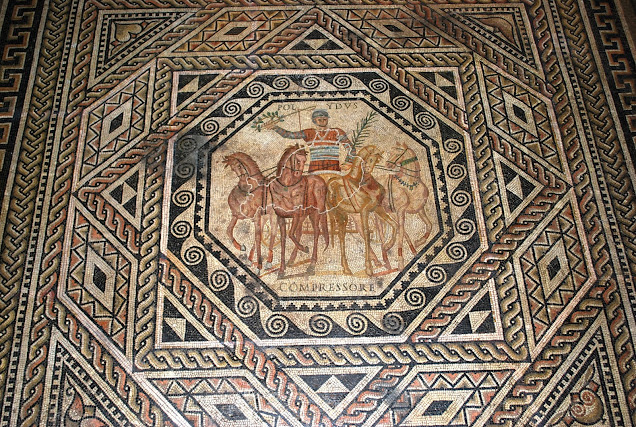Pilate inscription in Caesarea
 In June 1961 Italian archaeologists led by Dr. Frova found this limestone block in the theater of Caesarea. It was in secondary use and it bears the name of Pontius Pilatus.
In June 1961 Italian archaeologists led by Dr. Frova found this limestone block in the theater of Caesarea. It was in secondary use and it bears the name of Pontius Pilatus.Pontius Pilate governed for eleven years as the fifth Roman prefect, or procurator, of Judea. His name has gone down in history because of the New Testament account of the trial of Jesus of Nazareth, which he presided over, sentencing Jesus to death by crucifixion. Both Josephus Flavius and Philo of Alexandria describe Pilate as a cruel and unpopular ruler. Unlike his predecessors, he was completely insensitive to the religious sentiments of the local population. On one occasion, Pilate attempted to bring military standards bearing the likeness of the emperor into Jerusalem, deeply offending the Jews. He even confiscated funds from the Temple treasury in order to construct a large aqueduct for Jerusalem, and then mercilessly suppressed the protest that erupted in response. In the end, this notorious procurator was removed from office for his massacre of the Samaritans.
Despite the familiarity of the name Pontius Pilate, this archeological find, a unique historical document, is the only known artifact to record it. It is a fragment of the dedicatory inscriptions of a building, probably a temple, constructed in honor of the emperor Tiberius. The remaining text read:
…]S TIBERIVM
…PON]TIVS PILATVS
…PRAEF]ECTVS IVDA[EA]
The inscription was discovered in secondary use in a staircase of the Roman theater at Caesarea, the city that served as Rome’s administrative center in the province of Judea. The procurators were based in Caesarea and only visited Jerusalem on special occasions, or in times of unrest.
A copy of the stone is on display in Caesarea. The original can be seen in the Israel Museum in Jerusalem.



Reacties
Een reactie posten